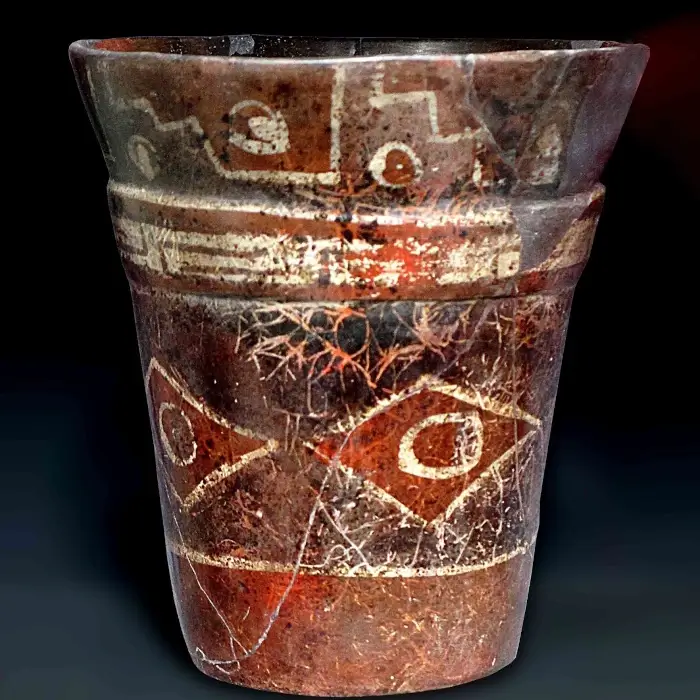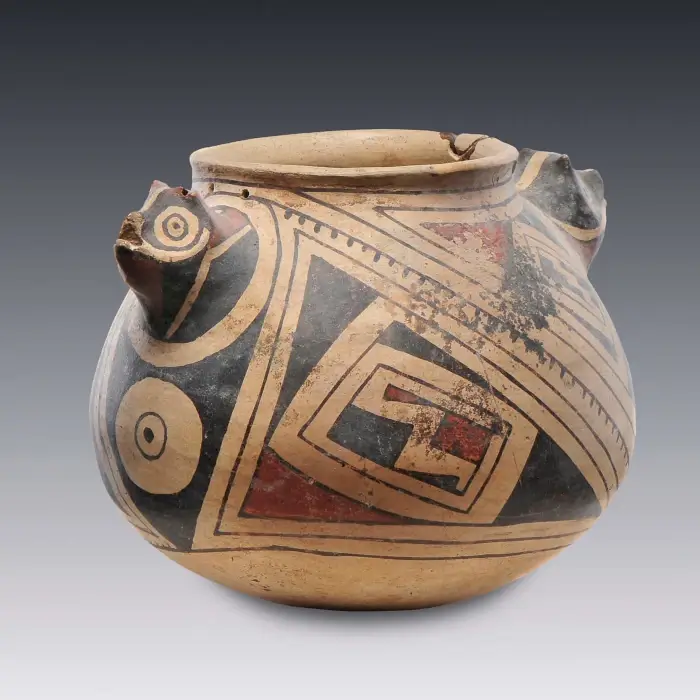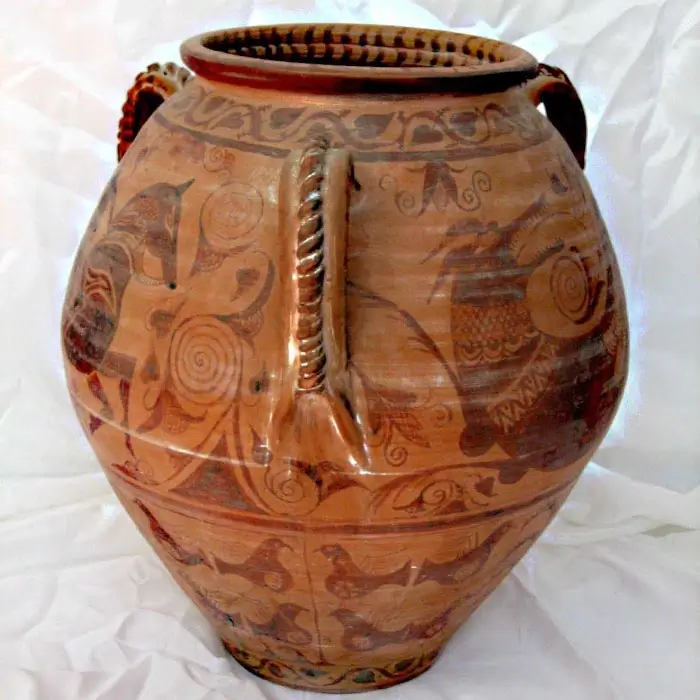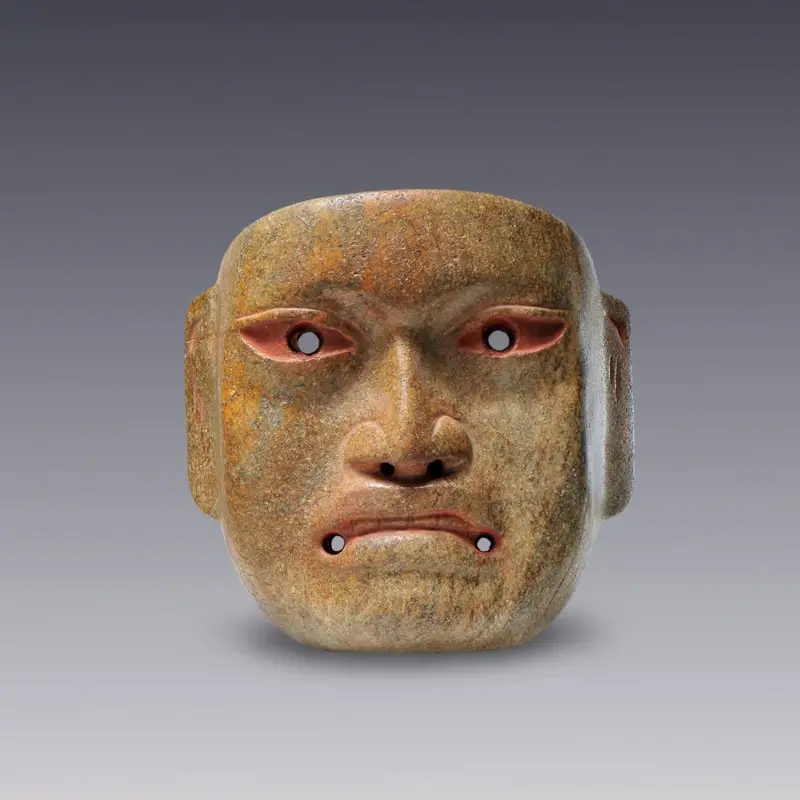Wari Pottery: Pre-Columbian Artistic Legacy
Wari or Huari ceramics, a fundamental part of pre-Columbian pottery and art, reflect the cultural richness of an empire that dominated the central Andes between the 7th and 13th centuries AD. This artistic legacy stands out for its technical complexity and stylistic diversity, inviting us to explore the depths of a civilization that marked a before and after in Andean history.

Where does Wari pottery come from?
The fascinating Wari pottery found its cradle in a vast empire that extended throughout what we know today as Peru, from the coastal regions to the heights of the Andes.
This enormous territory witnessed the flourishing of the Wari culture, especially between the 7th and 12th centuries, a period during which this civilization reached its peak, before giving way to the expansion of the later and better known Inca Empire.
One of the first things you will notice about Wari pottery is its exceptional quality and the detailed aesthetics of its pieces made with high quality clay.
Distinctive characteristics of Wari ceramics
Wari pottery is characterized by its remarkable size, with pieces that can exceed 30 cm in height, and in some cases, reach up to 90 cm.
This ceramic, which was an essential part of the religious and ceremonial practices of the Wari culture, is distinguished by its stylistic diversity, which includes various shapes such as bottles with flat necks and bases, bottles with two spouts, double chambers, and pitchers with elongated necks.
The decorative motifs of these ceramic pieces range from symbolic elements to dimorphic figures, often inspired by animals or mythological beings, and using a vibrant color palette.
Wari ceramics developed in different styles and phases, such as Chaquipampa, Conchopata, Robles Moqo and Niñaque, each with its own characteristics and adapted to the cultural and geographical influences of its time.
The archaeological sites of Conchopata and Chakipampa in Ayacucho, which demonstrate the influence of neighboring cultures such as the Nazca and Tiahuanaco, are among the key places for the production and commercialization of this ceramic.
In addition, Wari ceramics are part of a rich artistic tradition that also includes textiles, goldsmithing and feather art, reflecting a complex society with a well-defined hierarchy of classes and trades. Their art and crafts, with a strong religious and ritual component, left a cultural legacy that transcends to the present day.
What were the most important pieces of Wari pottery?
The production of Huari ceramics was very varied, these are some of the pieces that are best known today and that are characteristic not only of this town, but of all pre-Columbian ceramics.
Large Conchopata-style urns: These urns, which could measure approximately 80 cm high by 90 cm in diameter, were used as deposits for offerings. They were decorated with characters similar to those of the Sun Gate of Tiahuanaco, and used a color palette that included red, gray, cream, black, white and purple.
Ceremonial vessels in the Robles Moqo style: They stand out for their size and for including urns, pitchers with faces on the neck, figures of llamas and vases, with heights varying between 66 cm and 55 cm. They were decorated with phytomorphic motifs, such as corn cobs, and other geometric and natural designs, using colors such as red, white, purple, gray, cream and black.
Everyday objects in the Chaquipampa style: Unlike previous styles, Chaquipampa ceramics included pieces for daily use, such as vessels, bowls and bottles modeled in human or tuber shapes, decorated in white, purple, gray and cream colors.
Viñaque style hemispherical bowls and vessels: This style is characterized by pieces such as hemispherical bowls and small pitchers or vessels with effigy necks, decorated with geometric figures of felines, stylized plants and fretwork bands.

Buy pre-Columbian ceramics
Find original pieces and also reproductions identical to the traditional ceramic works that were made in pre-Columbian America and that are only found in museums, making them affordable.
The cultural influence of Huari ceramics
The cultural and religious influence on Wari or Huari ceramics is evident in the integration of styles and motifs both local and from other regions, such as Nazca.
This fusion reflects not only the territorial expansion of the Huari but also the adoption of elements of prestige and possibly shared cosmogony between different Andean cultures.
Burial practices and objects placed in the tombs, such as trophy heads, indicate a complex interaction between the local and the imperial, underlining the political, social and economic dominance of the Huari.
Wari ceramics reflect the complexity and diversity of this Andean culture, standing out for its fusion of local styles and influences from other peoples of southern America. This cultural interaction is evidence of Wari expansion and dominance, marking a significant chapter in pre-Columbian Andean history.
The practice of including ceremonial and prestige objects in tombs underscores the importance of the religious and social in their ceramic art. In short, Wari ceramics are an invaluable testimony to the artistic sophistication and cultural dynamics of this ancient empire.





